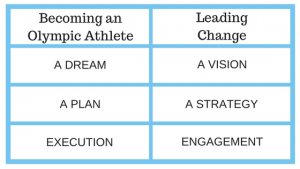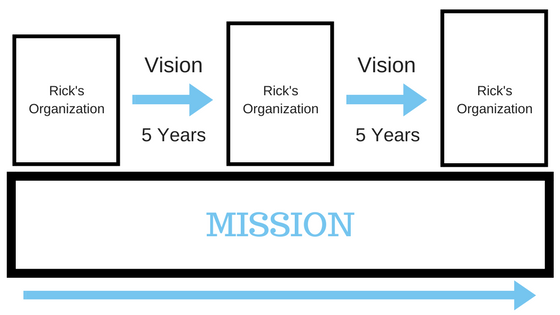Have you seen the 2018 Winter Olympics?
I saw parts of it. Of course I’m impressed with the incredible sportsmanship showed. But I’m extremely impressed by how determined the athletes are to be part of these games. That determination shows up in different shapes and forms. Some, like the skier Lindsey Vonn, kept going even after all kinds of injuries.
And what do you think of Seun Adigun and Ngozi Onwumere of the Nigerian bobsled team? Yes, you read that correctly: a Nigerian bobsled team. That requires determination.
In an interview Adigun brings her whole Olympic adventure back to one sentence:
“I put a plan down, and I’m ready to execute that plan”.
(The New York Times Magazine, February 4, 2018)
Put it that way, it sounds simple. Make a plan and execute it. And it is that simple. Well …… sometimes. But one thing for sure, without a dream of being an Olympic athlete and a plan, you will never go to the Olympics.
Becoming an Olympic athlete and leading a change process have a lot in common. Both require a dream, a plan, and execution. The only difference is that in leadership we use different terms:
Let’s start with creating a vision or envisioning. Whether you lead a large organization, are a team leader, or have no employees or team members at all, envisioning is your tool.
What is envisioning? It is a process where you imagine a future for your organization, your team or for yourself. The verb “envisioning” has the word “vision” in it. Vision of course refers to eyesight but also, and that’s how we are going to use it here, to your ability to imagine a future. That could be a future for yourself, your team, your project or organization. Envisioning is the process in which you create that future.
A vision is sometimes confused with a mission. There are two major differences. The first difference is that a mission defines the purpose of your organization. A vision, on the other hand, imagines a future for your organization. A mission is your organization’s reason for its existence. A mission statement is your answer to key questions:“ Why does my organization exist?” “Why does the team exist?” or “Why do I as a leader exist?”
Another difference is that a mission doesn’t change over time. However, a vision changes by definition because you only create it for a finite period. It is your destination. Once you have reached it, you create a new one.
The figure below shows the differences between a mission and a vision. In this example, Rick, the main character in my book, Leading through Change: Six principles of leading people in unpredictable times, created his vision for change in his organization that will be accomplished in the next 5 years.
Leadership Question of This Month?
If you are a CEO or Director:
What is your vision for your organization?
If you are a team leader:
What is your vision for your team?
If you are interested in personal leadership:
What is your vision for your own leadership?

















Leave A Comment